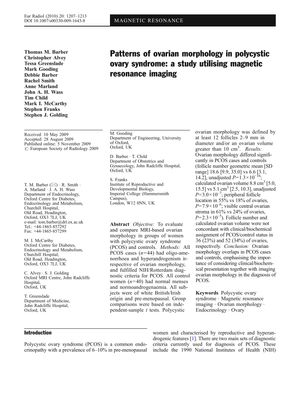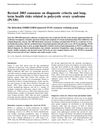Patterns of Ovarian Morphology in Polycystic Ovary Syndrome: A Study Utilizing Magnetic Resonance Imaging
November 2009
in “
European Radiology
”

TLDR The study found that women with PCOS have more and larger ovarian follicles and differences in ovarian structure, but these features alone can't always diagnose PCOS.
In the 2009 study involving 44 women with PCOS and 40 control women, MRI was used to compare ovarian morphology. The PCOS group exhibited significantly more ovarian follicles, larger ovarian volumes, more frequent peripheral follicle location, and more visible central stroma compared to controls. Despite these differences, there was an overlap in ovarian morphology between some PCOS cases and controls, indicating that ovarian morphology alone may not be definitive for PCOS diagnosis. The study also confirmed that a high number of follicles and larger ovarian volumes are associated with the Rotterdam criteria for PCO morphology and that serum testosterone levels correlate with these morphological features in PCOS, suggesting an ovarian contribution to hyperandrogenemia. The findings underscore the need to integrate clinical, biochemical, and imaging data for accurate PCOS diagnosis.

